This week we are looking at desirable digital marketing and how it has been using technology to build brands and bring individuality to the internet.
Desirable Digital Marketing foundations.
It’s hard to believe that desirable digital marketing is beyond its 30th year now. It’s over three decades since the first clickable banner went live in 1993.
Of course, some will argue that digital marketing existed as soon as the Web 1.0 platform was developed in 1991. This enabled people to search for things on the internet and is the very foundation of content creation. Fundamentally, it allowed marketers to showcase pieces of information on a website for others to find.
Within a decade, Six Degrees was enabling its users to upload a profile and make friends with other users, eventually creating the culture that spawned the first blogging site in 1999.
The Digital Marketing Explosion.

Regardless of the exact time when digital marketing exploded onto our screens, it’s easy to say that technological advancements of the 21st-century have somewhat weakened traditional methods of advertising and accelerated online content like an unstoppable tsunami; a storm that just keeps moving and expanding.
I use dramatic and destructive terms to describe the relentless rate at which content is created because we have reached a point in history where we are now faced, every second of every day, with autonomous creations of artistic wonder and aesthetic delight, mixed in with travesty and utter bullshit.
Yes, we are at a stage where we have to question the saturation levels and the validity of digital content.
Do you care about your digital presence?
I often find myself asking business owners whether they really care about their digital presence and the online perceptions that may arise from poorly constructed content.
In some cases, there is a suspension of disbelief, and many nonchalantly perceive the shoddy work to be acceptable and worthwhile; shrugging at the errors in an arbitrary manner.
The desirable digital marketing years.
Many business owners are divided over the surge of online media and prefer not to be reminded that they are slaves to the digital age. They shudder at the thought of further engagement with an objectionable master, and they assure me that they are reluctantly using Facebook and nothing else.
Facebook: it’s as if the largest platform is their sole contribution to the cause.
The problem for the traditionalists is that their favoured forms of advertising are likely to disappear altogether soon and, despite the ugly side of digital marketing, it’s inexpensive and reaches a much wider audience very quickly.
It’s the convenient execution that makes digital marketing so appealing to the masses. When Yahoo bounced onto the scene in 1994, it recorded 1 million hits within a year.
Desirable digital marketing emerged so quickly and aggressively that, by the end of last year, 3.6 billion people were using social media with Facebook harbouring the majority of monthly users (2.7 billion).
When Google emerged in 1998, few predicted that within just a few years it would be the go-to search engine. By 2006, search engine traffic hit 6.4 billion.
Google’s market share of the search engine traffic is now over the 90% mark.
What Google did particularly well was to launch an idea and continue to improve upon it, adding apps, maps, a cloud, and the popular video-sharing platform, YouTube, which has encouraged us to connect and share in a completely different way since 2005.
The desirable digital marketing game-changer.
During the early part of this century, what really changed the game for internet advertising was the introduction of the Web 2.0 platform – shorturl.at/cpxI3. This allowed users to interact with other users and, more importantly, other businesses.
By 2004, internet advertising in the U.S. alone was reaching the $3billion mark and this was an awakening to those who had been ignoring the trends. Two years later, Facebook and Twitter opened their digital doors to the world and soon everyone woke up to the importance of desirable digital marketing.
Desirable Digital marketing became very appealing to businesses due to its range and its value for money.
Companies are able to attract customers with measurable effectiveness that uses metrics to analyse, predict, and present real-time results.
Content Marketing

Ever since the television advertising of the 1950s, when the engagement was replaced by a need to increase sales, the focus shifted and everything changed for the sake of the marketers.
Even blue and pink became a thing as the gender-specific split was perceived to be more marketable if males and females had their own colour.
From the early 2000s onwards, content marketing has revolutionalised the online business community and assisted companies to achieve their objectives with a tasty ROI.
The television adverts gave us more engaging visuals than the newspapers, leaflets and magazines and, as soon as colour television arrived, so did another dimension of marketing.
The reason why television works so well is that it combines everything that our attention desires: moving objects and bright colours – https://pandologic.com/publishers/broadcast-media/4-reasons-television-marketing-still-works-audience-engagement/
Fairgrounds, casinos, arcades and slot machines are all examples of where colour is used to maintain our undivided attention.
And this is where the marketers have taken us with desirable digital marketing: quick, effortless streaming, straight to the cerebrum.
We humans like shortcuts – cognitive or otherwise – and reading posts like this one takes time and some effort. However, the short, colourful video tells the same story but it is easier on the eye and perhaps more pleasing to the mind.
The problem we have now is that this cultural space is cluttered and saturated to such an extent that it’s increasingly more difficult to stand out from the crowd and get noticed –
https://www.adlibweb.com/is-the-digital-marketing-field-saturated-heres-what-you-need-to-know
Digital content is ceaseless and, sadly, perpetually predictable. The same companies are throwing out the same mindless posts to remind us of what we already know. It’s not providing enlightenment, information or knowledge, it’s just burning the school down.
And with the addition and yet another platform, Threads (not a dystopian nuclear war film from the 80s ) – https://en.wikipedia.org/wiki/Threads_(social_network) there is further evidence to suggest that we want more of the same, mindless shit; we just can’t get enough.
What’s required to drag the best companies away from the white noise is good, technical SEO knowledge to help websites gain momentum and reap recognition for relevancy.
High-quality content is more consistent. If the content is unique and tailored to meet the requirements of a specific audience, it will naturally be more sustainable.
Without the skills to market digitally, it’s very easy to get lost in the herd.
Whereby inbound digital marketing attracts through the value of content creation, outbound marketing is quicker and relies heavily upon banners and advertising inserts on websites, search engines, PPC (Pay-per-click) and social media ads.
Desirable Digital Stats and Facts
There are some encouraging facts to assume a good ROI for outbound digital marketing that is desirable. For instance, Google tells us that for every $1 spent, Google says it averages an $8 return.
The stats are comforting but you can see your investment clicked away if the conditions haven’t been analysed properly.
As soon as the paid ads are stopped, the website’s popularity will drop like a stone unless there is a cushion of full optimisation on board, with an abundance of engaging content to provide buoyancy.
If you are looking to float on the digital market, Wash Digital can help the share value of your online stock. Contact us here for more details – www.washdigital.co.uk
